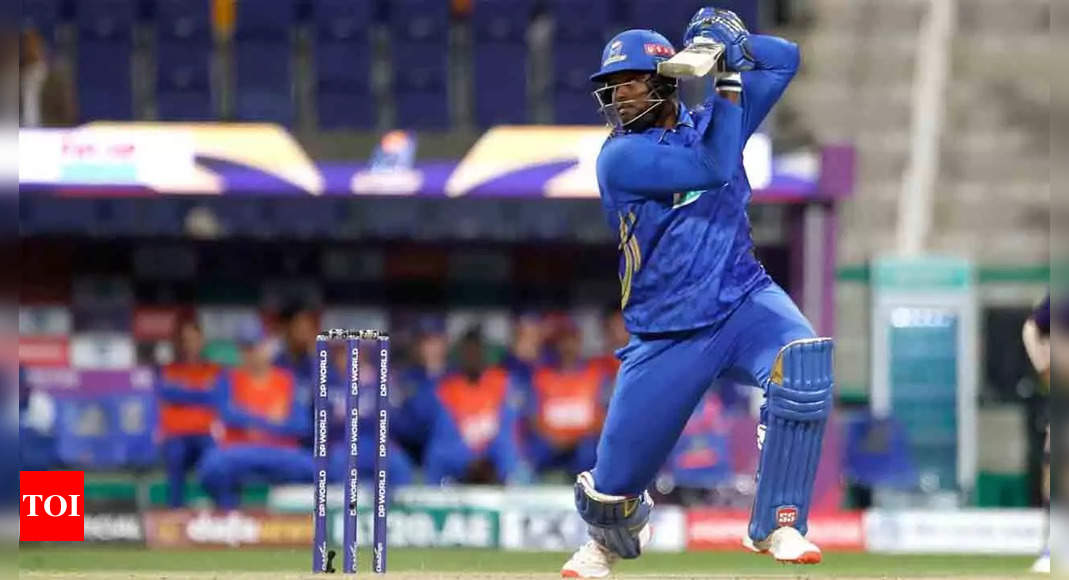Spin dominate
The second week of the 2025 SA20 season saw spinners stealing the spotlight, taking nearly as many wickets as pacers despite bowling 200 fewer deliveries overall. Spinners averaged almost seven runs per wicket fewer than their pace counterparts and conceded 1.54 fewer runs per over, underscoring their effectiveness.
Go Beyond The Boundary with our YouTube channel. SUBSCRIBE NOW!
Pace vs Spin – Week 2 (13-19 Jan)
| Type | Balls | Wickets | Average | Economy |
| Spin | 865 | 46 | 21.23 | 6.77 |
| Pace | 1069 | 52 | 28.48 | 8.31 |
The degree of turn varied significantly across venues, with Durban (2.94°), Gqeberha (2.88°), and Johannesburg (2.68°) offering far more assistance to spinners compared to Paarl, Cape Town, and Centurion, where the average turn was below 2.00°.
Left-handed batters particularly struggled against finger spin, suffering 15 dismissals at an average of 14.53, with nine of these coming against off-spin – a classic spin matchup. Meanwhile, right-handed batters found wrist spin challenging, averaging 22 while striking at just 102. In contrast, left-handers fared much better against wrist spin, striking at nearly 129 with a superior average, highlighting an intriguing trend to monitor.
Batters’ vs Spin – Week 2
| vs Finger Spin | vs Wrist Spin | |||||
| Batting Hand | Dismissals | Average | Strike Rate | Dismissals | Average | Strike Rate |
| Right-handers | 18 | 27.38 | 111 | 15 | 22.13 | 102 |
| Left-handers | 15 | 14.53 | 111 | 6 | 28.50 | 129 |
Noor continues to shine
Amid the dominance of spin, left-arm wrist spinner Noor Ahmad stood out despite his team languishing at the bottom of the table. Noor claimed five wickets this week at an average of 15.80 and an economy of 6.58, solidifying his reputation as a game-changer on turning tracks.
Noor’s skill lies not just in his turn but also in his ability to generate drift through the air. Compared to other left-arm wrist spinners, Noor consistently produces more drift and effectively moves the ball away from right-handers before turning it back in. This unique ability sets him apart from the likes of Tabraiz Shamsi and Kuldeep Yadav.
Left-arm wrist spinners to right-handers in T20s
| Player | Average Drift | Balls drifting away |
| Noor Ahmad | 1.46 degree | 95% |
| Kuldeep Yadav | 0.80 degree | 36% |
| Tabraiz Shamsi | 0.64 degree | 4% |
Left-handed batters could be key to countering Noor, but his sharp googly ensures that even they are not entirely safe. Sunrisers Eastern Cape‘s Jordan Hermann learned this the hard way when Noor targeted his stumps with precision. With such a versatile skillset, Noor Ahmad continues to be a near cheat code for T20 cricket when conditions favor spin.
Powerplay batting proving vital
Strong starts remain crucial in any format, and the SA20 has been no exception. Winning teams have lost half as many wickets in the Powerplay compared to their losing counterparts and have also scored at nearly one run per over faster.
Powerplay Records in SA20 (12 completed matches up to 19 Jan)
| Result | Wicket Lost | Average | Scoring rate |
| Winning Team | 11 | 55.36 | 8.45 |
| Losing Team | 22 | 23.81 | 7.27 |
Table-toppers MI Cape Town and Paarl Royals exemplify the importance of Powerplay batting. MI Cape Town’s Rassie van der Dussen (97 runs) and Paarl Royals’ Joe Root (96 runs) and Lhuan-dre Pretorius (93 runs) lead the Powerplay scoring charts.
The Royals’ left-right opening combination of Root and Pretorius has been formidable, with at least one of them remaining set after the Powerplay in three of their four matches. Pretorius has been particularly destructive, striking at 196 in overs 4-6, while Root has yet to be dismissed inside the first three overs this season.
MI Cape Town’s van der Dussen may not score quickly in the Powerplay, striking at 118, but his wicket conservation has been invaluable, as he remains unbeaten in the Powerplay after five games. His steady approach is perfectly complemented by Ryan Rickelton, who smashed 30 off 16 in the Powerplay during his blistering 89 (39) against Joburg Super Kings. Together, van der Dussen and Rickelton form an ideal balance of stability and aggression for the table-toppers.




